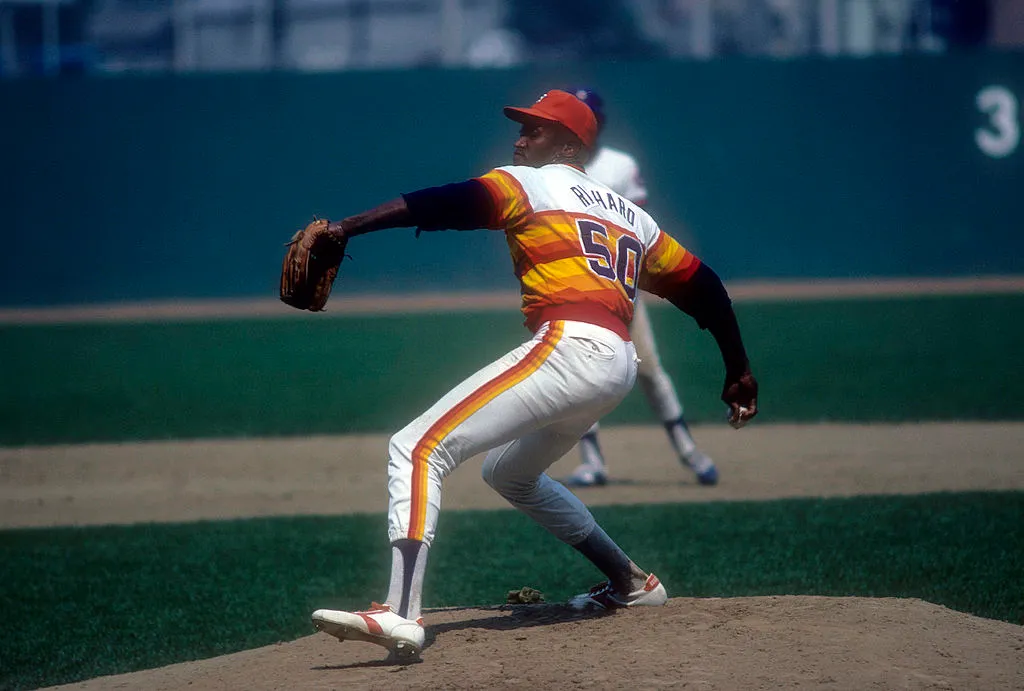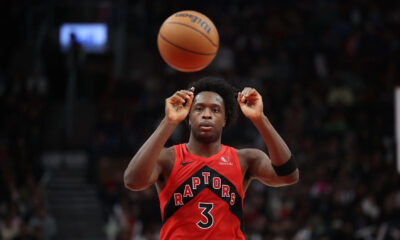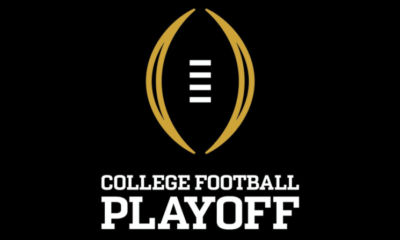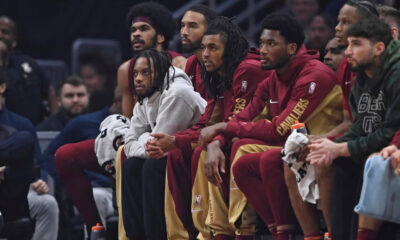
A former No. 2 overall pick and flamethrower right-hander, J.R. Richard was ready for a Hall of Fame career.
J.R. Richard was a dominant starting pitcher in the 1970’s, but a stroke midway through the 1980 season left him unable to keep playing. Today we take a look at what his career could have been like if was able to continue.
The Early Days and Excitement Around J.R. Richard
Born James Rodney Richard in Vienna, Louisiana in 1950, the right hander became a flamethrower during his high school career at Lincoln High School in Ruston, LA. His talent clearly drew interest from the get-go. All the hype led him to be the No. 2 selection by the Houston Astros in the 1969 First-Year Player Draft. After a couple of dominant seasons in the minors, Richard got his first big break in 1971. In his first career start against the San Francisco Giants, Richard struck out 15 batters in a complete game, 5-3 win. He would make three more starts as a September call-up that season.
Back and Forth Between the Minors and the Big Leagues
After making four appearances (one start) the following year, Richard became a part of the starting rotation in 1973. He would start 10 of 16 games he made an appearance in, compiling a 6-2 record with 75 strikeouts in 71.2 innings. His first full major league season wouldn’t come until 1975, however. Despite the Astros’ struggles that season, the flamethrower posted a statistically solid season. In 31 starts overall, the right hander put together a 12-10 record with a 4.39 ERA and 176 K’s in 203 innings. He also issued the most walks in the majors. Not great numbers, but not ones that would get him booed out of the Astrodome either.
1976-1977: A Mainstay and Flamethrower in Houston’s Rotation
After solidifying himself as a capable arm in the NL, Richard asserted his dominance even further in 1976. In 39 starts, the righty put together a 20-15 mark, throwing 291 innings with a 2.75 ERA and 214 strikeouts. Not only that, but Richard was a big physical presence on the mound. He received down-ballot support in the MVP and Cy Young voting for the first time. Standing 6-foot-8, hitters were often scared or even devastated by his hot fastball and nasty slider. As this New York Times article notes, one word to describe Richard was intimidating. Batters almost felt like the guy was standing on top of them, similar to Randy Johnson decades later.
Richard’s Intimidation Factor
The height and arm slot also made batters have to think more about how to attack an at-bat. So much so, even premier sluggers at that time would have a tough match-up. Just ask the Pittsburgh Pirates‘ Dave Parker. In a 1978 Sports Illustrated article, Parker noted, “When he pushes off the mound and lets that ball go, he looks like he’s 10 feet away from you instead of 60. It causes you to lean a little bit and makes you think you have to swing the bat quicker. That makes his off-speed stuff work better, too. I think once he improves his control, he’s going to be one of the best pitchers in the game.” 1976 would be the first of four consecutive 15 or more-win seasons for Richard. Not only that, but he would begin a four-season stretch of recording at least 200 strikeouts.
But Not All Pitchers Can Be Perfect
However, despite the sometimes-gaudy numbers, Richard would struggle with his control at points during games. In the same SI article, Richard noted, “It hasn’t been a strength or stamina problem. Because that same sort of thing has happened to me at the start of the game, or in the second inning, when I’m not tired at all. It’s more mental. I should be thinking, ‘just get the ball over the plate’, rather than trying to throw it 300 miles an hour. When your rhythm is right, it will take care of velocity. You’ve just got to think–and stay with it at all times.”
It is fascinating, 45 years later, how similar Richard sounds to pitchers today. Many of the best pitchers in 2023 have amazing stuff on par with the Astro great but struggled to reign in their command. In an age where velocity comes easy but control is often a white whale, coaches instruct developing pitchers to “just throw it down the middle,” and the rest will sort itself out. J.R. Richard understood that in his heyday.
1978-1979: 300 K’s, And A Top ERA to Boot
In the 1978 season, Richard continued to roll, posting a 18-11 record with a 3.11 ERA and 303 strikeouts in just over 275 innings, including 16 complete games and 3 shutouts. 1979 was his statistically best season, compiling an 18-13 mark with a 2.71 ERA (tops in MLB), along with 313 K’s (also first) and 19 complete games across 292.1 innings. He would finish third in the NL Cy Young voting that season and in the top 20 for NL MVP. Cutting down on walks was the key, as a drop from 141 in ’78 to 98 in’79 led to a 1.088 WHIP, the best of his career up to that point.
1980: Stroke Derails Career
At the start of the 1980 season, Richard looked to be right as rain and be on his way to a career year. However, in the middle of June, he would begin to feel some fatigue in his throwing arm, which raised some concern. His early season success (1.90 ERA) would net him his lone career All-Star appearance. He felt some nausea in a later start, and then, on July 30, 1980, Richard collapsed after a blood clot led to a stroke. He would never participate in a Major League Baseball game again.
Post-Career and Death
After retiring from baseball in 1984, Richard fell on hard times. He was divorced twice and found himself living under a bridge by 1994. However, he found good fortune by becoming a minister and giving back to the Houston community. He died due to complications of COVID-19 on August 4, 2021, at the age of 71.
What Could Have Been
So, as is always the case, people wonder with Untapped Potential what could have been for players’ careers. And today, if J.R. Richard never had his stroke, could he have been a Cy Young Winner? Unfortunately, that question will never receive an answer. And it’s a shame, too. There is a very good chance he would have, and continued dominance might have led to a trip to Cooperstown, as well. Richard will be remembered as a top-tier flame-throwing pitcher who never reached his true potential.
Related

Featured Articles
-


-


Features
/ 12 hours agoNew York Knicks Trade Was Needed
In a time mostly controlled by college football bowl season, the NBA made a...
By Brian Ramos -


College Football
/ 2 days ago2024 NFL Mock Draft 1.4 Pre-NYE
As the year comes to a close and we ring in the new year...
-


Features
/ 2 days agoThe Injured Cleveland Cavaliers Stay Afloat
On December 15th, the Cleveland Cavaliers were hit with a double whammy of terrible...
By Patrick Yen



